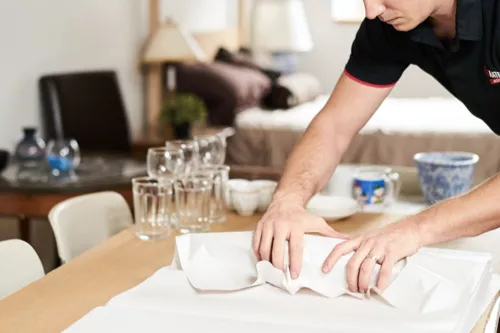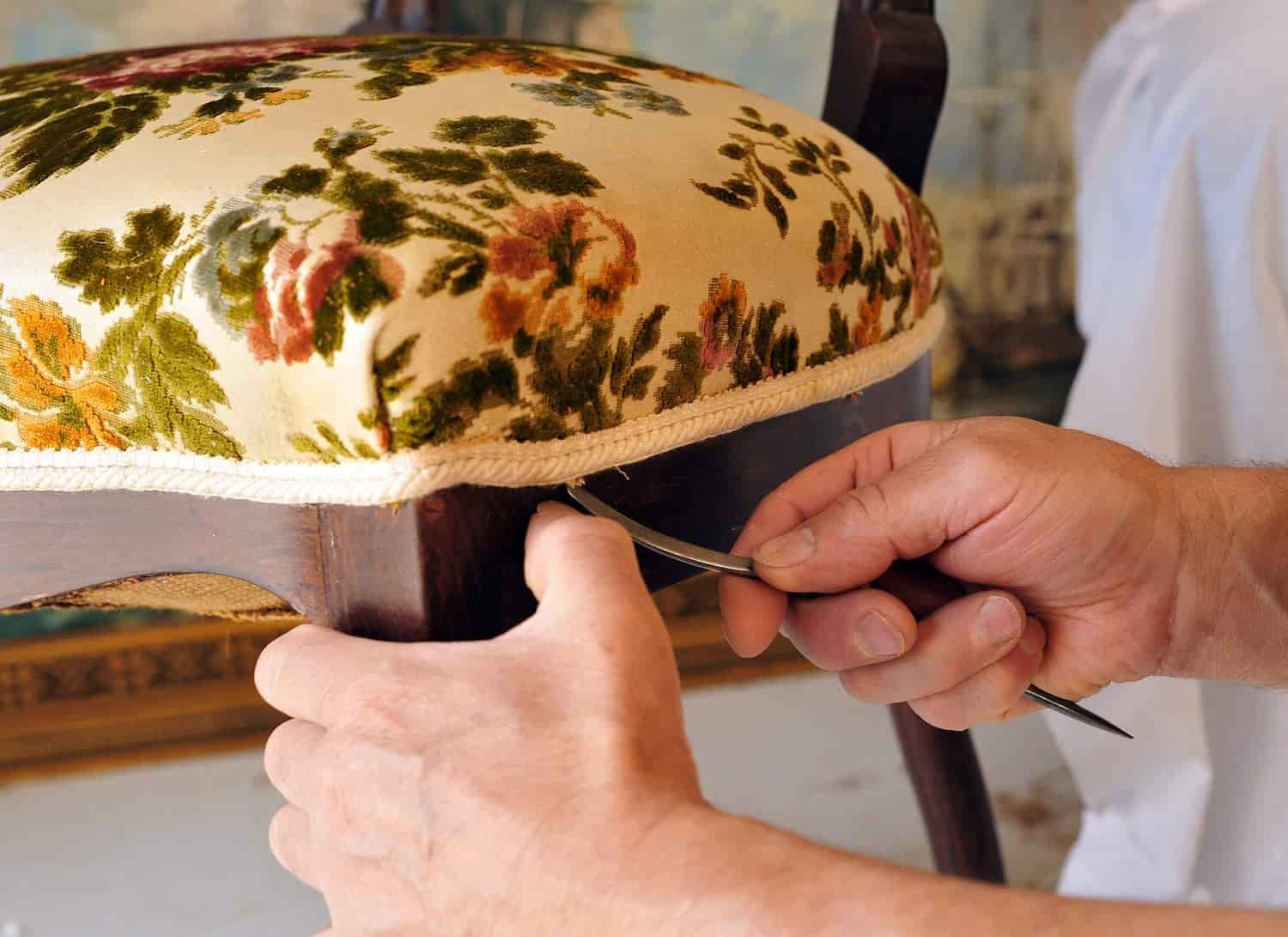To make sure your glass tables and antique cabinets get to your destination in great condition, FlatRate gathered 7 essential tips for packing and moving fragile furniture.
Heavier furniture tends to be well made and therefore requires extra care when moving. Despite the sheer size and weight, it tends to be fragile and oftentimes valuable. While gathering a few friends may seem like a cost-effective idea when moving a heavy piece of furniture, it can be easy to forget that making a mistake can cause damage to the item itself as well as damage to your apartment or home.
#1: Hire Professionals
It’s no secret that leaving the hard work to the professionals is always the way to go. After all, moving heavy furniture requires experience, the right equipment, patience, and a specific skillset.
At FlatRate, we know exactly how to take care of your fragile items and have exclusive services like custom crating and specialized protection to make sure your furniture always arrives in the best condition.
When in doubt, don’t take the risk of damaging your items and hurting yourself — call FlatRate now and learn how we can help with your move.
#2: Don’t Do It Alone
If hiring professionals is not on your plans, take this tip very seriously: never attempt to carry your heavy furniture by yourself.
Gather friends and take on the challenge together but always keep in my mind that trying to move heavy objects on your own — regardless of their size — is extremely dangerous and risky.
#3: Take Time to Pack Right
Packing and wrapping furniture properly is the secret to making sure everything is protected for the long journey.
Invest in bubble wrap, plastic wrap, masking tape, and other high-quality packing materials, and your furniture will make it to its destination in one piece and with no scratches.
For extra protection, get packing materials that are waterproof to avoid any chance of items getting wet. Equally important, make sure to pad your furniture and the corners of wooden items — styrofoam and pillows are both great for that kind of job.
#4: Don’t Force It
Take extra precautions like removing the glass from windows or taking doors off the hinges to avoid breaking and damaging your furniture or tearing fabrics.
Although this might seem like extra work, we guarantee that it is much more effective than you pushing your couch through the doorway. Make space for your items instead of forcing them.
#5: Slide It Instead of Carrying It
Furniture slides are available in all shapes and sizes. These can be life-savers when it comes to moving your furniture around. Use hard plastic sliders for carpeting and soft sliders for hard floors.
If you’re running out of time and can’t go to a store, it’s also easy to make your own sliders from plastic container covers, bedspreads, towels, and carpet remnants.
#6: Disassemble Your Furniture
It is highly recommended that you disassemble your furniture completely before moving it. This practice will make your item a few inches smaller, preventing the pieces from moving on their own and breaking. Remove the feet of couches. For all other pieces, take off any knobs, drawers, racks, shelves, and legs. While disassembling items, store all screws and other important pieces where they won’t go missing.
#7: Plan Where It Lands
Having a floor plan ahead of your move day will make the entire process much easier. At FlatRate, our Relocation Specialist will have that ready for you as part of our complimentary moving services.
If you’re doing it on your own, measure your new home and sketch a floor plan with the correct measurements. Once you are ready to move things in, move your furniture to the correct spot. A good preparation process ensures good placement and a happy home.

